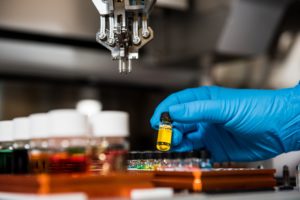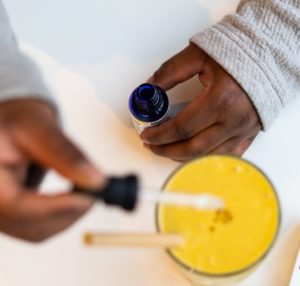As the end of the year comes nearer, so too does the inevitable parade of commentary on the biggest trends of 2019. Alongside the royal baby, the pronunciation of “Buttigieg” and oat milk, cannabidiol (CBD) is hard to ignore. It’s showing up in everything from face masks to salad dressing and being sold everywhere from gas stations to beauty supply stores.
But CBD is largely unregulated by the federal government — something very few Americans realize. The vast majority (92%) incorrectly assume or have no idea if the federal government regulates CBD. The lack of regulation makes for a lack of standards, and consumers can’t know if those oils, gummies and dog treats are miracle cures, snake oil or something in between.
As it stands today, more than one-third (34%) of Americans have bought a CBD product. It’s a market that’s poised for explosive growth. It’s also a market that is making concerning assumptions. CBD users are more than twice as likely as non-users (86% versus 42%) to feel that CBD is safe. Users also have few qualms about the broad availability of CBD. Seventy-one percent of CBD users think consumers know enough about its risks and benefits for it to be widely sold in stores, compared to just 28 percent of non-users.
CBD users are more than twice as likely as non-users (86% versus 42%) to feel that CBD is safe.
Users of CBD are putting a tremendous amount of faith in these products, despite an alarming lack of research on their safety. Timothy E. Welty, a professor of pharmacy at Drake University in Des Moines, told The Washington Post’s Lavanya Ramanathan, “I would be very cautious.” Noting the lack of oversight, Welty added, “You’re not sure what you’re really getting.”
Case in point, the FDA has issued 22 warning letters in 2019. In 2018, it sent just one. These warning letters largely take bad actors to task for making unverified marketing claims, the most recent of which flagged statements including, “CBD lowers incidence of diabetes,” and that CBD can be used to treat schizophrenia, opioid addiction and PTSD.
CBD may have a wide range of positive effects, but the problem is we really don’t know. There is not nearly enough research on CBD for these claims to be made and there is not enough oversight and testing to ensure the products out there are safe and are what they claim to be. Virginia Commonwealth University studied nine samples of CBD vaping liquid that were marketed as “100 percent natural” and found that four of those samples contained a synthetic compound, 5F-ADB, that has been “linked by the Drug Enforcement Administration to anxiety, convulsions, psychosis, hospitalization and death.”
If you’re reading this and assuming CBD users must not be well educated, you’d be wrong. The Consumer Brands Association’s survey revealed that 63 percent of CBD users hold a bachelor’s degree or higher. They also tend to be male (53%), parents (74% have children under 18 at home) and young. Americans in their 30s are the most likely users of CBD.
Those demographics could shift over time, as non-users begin purchasing CBD. While there are some non-users that have no desire to try CBD — a combined 50 percent of non-users said they don’t want to, don’t have a need for it or that it doesn’t align with their values — the remaining half indicated an openness to CBD that could make them part of the burgeoning market in the future. They said they hadn’t tried it yet, and wanted it to be more thoroughly tested before trying it or were interested but found it too expensive.
Growth aside, Americans buying CBD in today’s huge market deserve the protection and consistency that federal regulation brings. The fact that they believe they already have it, shows that the situation is urgent and requires swift action.




